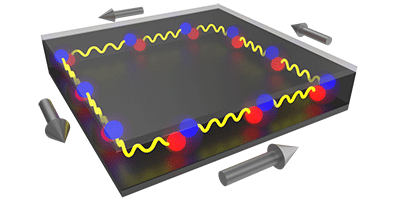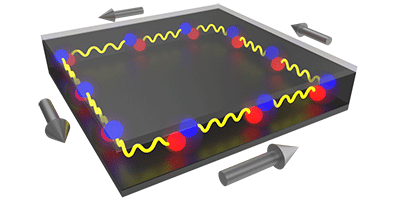Meet the Topolariton
Condensed-matter physicists often turn to particle-like entities called quasiparticles—such as excitons, plasmons, magnons—to explain complex phenomena. Now Gil Refael from the California Institute of Technology in Pasadena and colleagues report the theoretical concept of the topological polarition, or “topolariton”: a hybrid half-light, half-matter quasiparticle that has special topological properties and might be used in devices to transport light in one direction.
The proposed topolaritons arise from the strong coupling of a photon and an exciton, a bound state of an electron and a hole. Their topology can be thought of as knots in their gapped energy-band structure. At the edge of the systems in which topolaritons emerge, these knots unwind and allow the topolaritons to propagate in a single direction without back-reflection. In other words, the topolaritons cannot make U-turns. Back-reflection is a known source of detrimental feedback and loss in photonic devices. The topolaritons’ immunity to it may thus be exploited to build devices with increased performance.
The researchers describe a scheme to generate topolaritons that may be feasible to implement in common systems—such as semiconductor structures or atomically thin layers of compounds known as transition-metal dichalcogenides—embedded in photonic waveguides or microcavities. Previous approaches to make similar one-way photonic channels have mostly hinged on effects that are only applicable at microwave frequencies. Refael and co-workers’ proposal offers an avenue to make such “one-way photonic roads” in the optical regime, which despite progress has remained a challenging pursuit.
This research is published in Physical Review X.
–Ana Lopes





